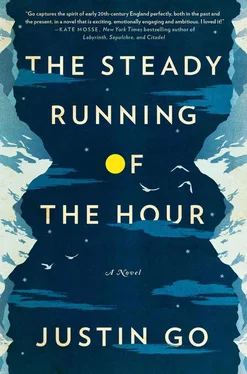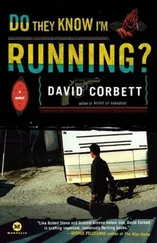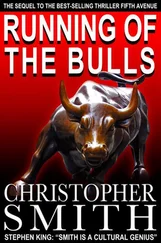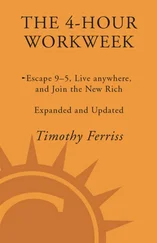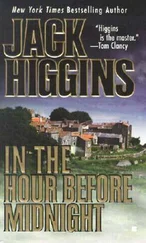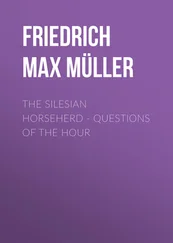On Saturday I ride the Northern Line to the British Library’s newspaper collection at Colindale. All morning I flip through tall red-bound volumes of musty newsprint, reviewing the press coverage of the expedition to make sure I haven’t missed anything. Then I wheel through the endless microfilm collection, scanning carefully through June 1924. The same material appears again and again: headlines about the expedition’s failure; vague accounts of Ashley’s death; grainy reproductions of a snapshot taken at Everest base camp; the impersonal eulogy from the king. Only one article interests me, a small column of print that appeared seven weeks after Ashley’s death.
EVEREST VICTIM
STORY OF A GRAND LAMA’S WARNING
(FROM OUR OWN CORRESPONDENT)
KALIMPONG, N. BENGAL
The death of Mr. Walsingham during his attempt to reach the summit of Mount Everest is stated here to have been foretold by the Abbot of Rongbuk, a High Lama with the physical deformity of immensely large ears, and who is regarded throughout the country as possessing second sight.
It is stated that he warned the porters when they left Rongbuk, near the expedition’s base camp, that should they again attempt the ascent of Mount Everest disaster would follow.
He stated that the Spirit of the Mountain had up to that time been merciful, but should his solitude be again disturbed he would surely wreak his vengeance on the disturbers of his eternal peace.
Whether this statement had any effect on the morale of the coolies is not known, but it is a fact that after this warning cases occurred of porters making excuses to avoid going higher on the mountain.
I try to find more about the abbot of Rongbuk, but he doesn’t appear in any other articles. So the next day I visit the British Film Institute on the South Bank to watch the official cinematic record of the Mount Everest expedition, directed by a man named J. B. L. Noel. I sit in front of a screen and pull headphones over my ears. The film begins with an unsteady placard, white letters flickering on the scratched black negative.
A story of adventurous explorers in a far-off land and their endeavour to reach the top of the world.
The clouds part to reveal a boundless range of mountains, the great peak hovering above them all. Then a telephoto image of the pyramidal summit, vignetted like a view through a telescope, the plume of wind and snow streaming past.
The film is silent, so I remove my headset. The second placard appears.
There is nowhere here any trace of life or man. It is a glimpse into a world that knows him not. Grand, solemn, unutterably lonely, the Rongbuk Glacier of Mount Everest reveals itself.
Pinnacles of ice appear, then the knife ridges of the mountain, the vapor pouring over windswept cornices from Nepal into Tibet. Tibetan villagers in soiled robes gawk at the camera from rough door frames. Sherpa porters walk past, freshly clad in windproof smocks and snow goggles. Finally the British, always shown from a distance: trekking in dense Sikkim jungles in short pants, swinging walking sticks; hiking in pairs on the bleak windswept Tibetan plain, among trains of laden yaks. Two climbers sit in the sun under pith helmets, their sketchbooks on their laps, squinting out portraits of villagers. A group of men take breakfast seated upon crates in the open air, behind them a dozen monks spinning prayer wheels in the wind. No one looks at the monks.
Into the heart of the pure blue ice, rare, cold, beautiful, lonely — into a fairyland of ice.
The glacier is pictured: a ponderous river of ice sailing down the mountainside. The party walks into a valley of ice, winding through a maze of frozen pinnacles, dwarfed by them, craning their necks to spy the summits. The British run mittened hands along crystal blue seracs, questioning their age or composition or provenance, or things even more unknowable. A climber snaps a huge icicle off a pinnacle and appropriates it for a walking stick, leaning on the glassy spire for uncertain support.
I search each frame for Ashley, but none of the figures is shown close up, so I click a button to fast-forward the footage.
Above the great mountain frowns upon us, angered that we should violate these pure sanctuaries that had never before suffered the foot of man.
The porters heft incredible loads on their backs; they scramble up rope ladders and pace over icy slopes. Ascending steep faces of slabbed limestone, the British bend gasping over their ice axes, straining to breathe in the rarified air. I fast-forward again. The image of the peak returns, the streamer blowing past, the clouds closing in.
Now could it be possible that something more than the physical had opposed us in this battle where human strength and western knowledge had broken and failed? Could it be possible we fought something beyond our knowledge?
The screen fades to black. I rewind the film, scanning backward and then forward. Suddenly I see the climbers and I hit the play button.
Eight men stand before the mess tent, sunburned faces with weathered half-beards, their mouths moving, their voices lost. The colonel stands at the center looking bemusedly at the camera. He is taller than the others but of equally lean build, his ice goggles perched over his hat brim. Beside him a handsome bareheaded man talks, hands stuffed in jacket pockets, leaning back to the colonel and laughing. This is Hugh Price, the celebrated mountaineer. Behind Price a slim figure stands holding a pipe, someone’s arm draped over him. I recognize the face from the newspapers. It is Ashley.
I set the machine to loop the ten seconds of footage. I lean up to the screen.
Ashley wears a tweed jacket with voluminous pockets, a long scarf wound around his neck. He is clean-shaven and looks younger than the other men, still boyish though his skin seems weathered from the Tibetan sun. His hand cradles the briar pipe, but he does not smoke it. He smiles faintly and looks away. He coughs. When Price speaks, Ashley’s cough turns to laughter. For a half-second Ashley’s eyes look into the camera and meet my own. The film loops again.

I eat dinner at an Indian restaurant on Drummond Street, thinking about Ashley the whole time. There was something in the film I didn’t expect, something that seemed slightly off. I pay the bill and start back for the hotel, stopping in Euston Station to buy sleeping pills from a drugstore. As I walk out of the station I realize what had bothered me. For days I’ve been reading grueling accounts of the expedition — the altitude sickness, the weeks of terrifying blizzards, the climbers practically broken by the time they set up the higher camps. But in the film Ashley didn’t look crazy or desperate. He looked happy. He stood in front of a camera with his friends and had no idea he’d be dead in a month.
— Or maybe he did know, I whisper.
The next morning I start with Imogen, running Web searches at an Internet café on Oxford Street. For hours I try her name in digital catalogs and genealogy websites. I find nothing. At the website of the Swedish National Archives I learn that most of their vital records haven’t been digitized yet. For hundreds of years these records were the responsibility of the local parish clergyman, who recorded not only births and deaths but christenings, communion attendance and migrations into and out of the parish. They even kept a kind of census recording the inhabitants of a household, their ages and occupations. The Leksand church archive is held in Uppsala, an ecclesiastical and university town about fifty miles north of Stockholm. But even if I went to Sweden, there’s no guarantee I’d find anything.
Читать дальше
